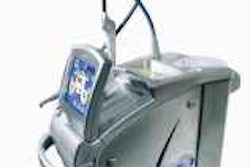Confused about treating your patient's periodontal predicament with partial or full-mouth scaling? There is no significant difference in clinical outcome between the two, so dentists should let the patient's budget and convenience be the deciding factor, according to a new study in the Journal of Periodontolgy.
Researchers from the University of Leipzig looked at 37 people with chronic periodontitis. Eleven males and 26 females between the ages of 37-65 participated in the study.
Out of the group, 20 people received traditional scaling and root planning (SRP) in two quadrants at four-week intervals, while 17 had full mouth scaling (FMS) done in one sitting. Researchers evaluated the probing depth (PD), bleeding on probing (BOP), and clinical attachment level (CAL) of molar and premolar teeth for both treatments at the beginning of study, six months, and 12 months later. All patients received supportive periodontal care during the study.
The CAL for the SRP group, which was 3.2 at the beginning of the study shrunk to 2.9 by the end of it. Similar improvements were seen in PD, which went from 3.0 to 2.7. In the FMS group, CAL dropped from 3.5 to 3.2, while PD went from 3.2 to 2.8.
While both techniques benefited the patients, neither was significantly more effective than the other, the authors noted.
"In contrast to other studies comparing SRP and FMS, which reported better outcome after FMS -- greater PD reductions and attachment gain -- we did not observe an additional clinical effect of the FMS after six or 12 months," wrote the authors.
A single FMS session saves both the dentist's and the patient's time. But on the flip side, it's a more exhausting process than the multi-session SRP.
"It is advisable to choose a treatment modality based on the time available and on the preferences of the patient and the operator," concluded the authors.


















